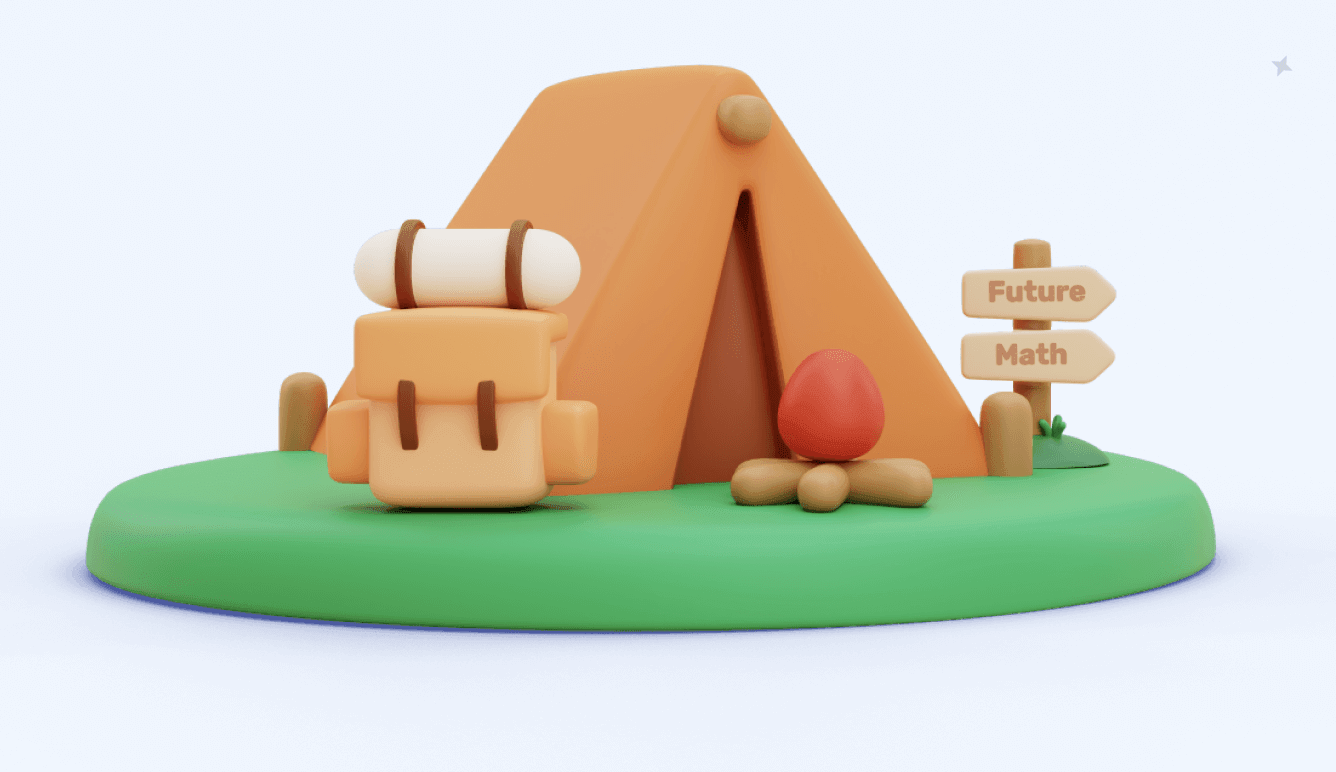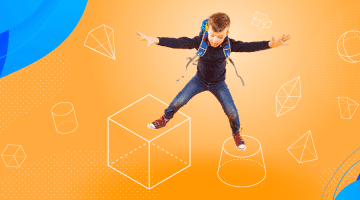Difference Between Geometric and Arithmetic
November 11, 2022
13 minutes read
Mathematics, usually called the universal language, covers an extensive range of ideas and principles that are important in our daily lives. Within this mathematical sphere, geometric and arithmetic sequences and series serve as precious tools that help us understand patterns and relationships in reality.
Here, we will discuss Geometric and Arithmetic sequences and series, exploring their differences, fundamental characteristics, practical uses, and what sets them apart. By grasping those mathematical ideas, we can improve our problem-solving skills and gain a deeper understanding of the beauty of mathematics in our interconnected world.
What is the Difference Between Geometric and Arithmetic?
When dealing with number sequences, arithmetic and geometric return values are very similar. However, geometric and arithmetic series differ in the type of progression they use. For instance, a geometric sequence is a list of numbers whose amount changes over time, while an arithmetic one always has a fixed number. In other words, the typical difference between arithmetic return values is the constant change in one term and the definite change in the next.
In contrast, what is the common ratio between successive terms in the sequence? An arithmetic sequence is characterized by a constant common difference between successive terms, whereas a geometric sequence consists of stable common ratios among successive values. Both types of sequences cannot be arithmetic or geometric; however, they can be both arithmetic and mathematical. To distinguish the two, an arithmetic sequence will be the first term of a geometric series, while a geometrical one will be the last.
Another significant difference between arithmetic and geometric means is how they are calculated. An arithmetic sequence consists of a list of consecutive numbers, while a geometric sequence consists of a fixed ratio. The arithmetic sequence includes adding or subtracting a fixed value from the preceding term. A geometric series can be used to estimate returns on investments or budgets.
What’s the difference between arithmetic and geometric Series?
When you ask, whats a geometric sequence, you’re referring to a sequence that consists of consecutive terms in the same constant ratio. A geometric series comprises a list of terms in which each term differs from the previous one by a specific factor or quantity. A common factor in a geometric sequence is the number of terms between the first and last term. Then, the new term is obtained by adding or subtracting the previous one. Arithmetic progression is a linear series.
Geometric series contains consecutive terms with the same ratio. Arithmetic sequences, however, consist of a list of numbers. In addition, a geometric sequence consists of a list of numbers in a given order. It is based on the quotient of the first term. Another way on how to know if a sequence is arithmetic is that the arithmetic sequence is composed of two different sets. The arithmetic series is a list of the first term in a string.
A geometric sequence is not arithmetic. It follows a pattern and has a fixed quotient. A geometric sequence, on the other hand, fails to have a quotient. This is a sign that arithmetic is superior to arithmetic. Once you know the difference between the two, you can begin to make better decisions in math and improve your performance.
What makes a sequence geometric is the successive terms that are different from each other. For example, a basketball or football bounces at a lower height than it does when it is added to the same digits. By contrast, a geometric sequence is a list of arithmetic. The difference between the two is the ratio of the first term to the second.
Geometric and Arithmetic Mean Are Two Different Kinds of Mathematical Sequences
The differences between geometric and arithmetic sequences can make math more complicated. For example, arithmetic and geometric series differ in treating the relationship between consecutive terms. The ratio between consecutive terms of a geometric sequence is always higher than that of an arithmetic series. Similarly, arithmetic and geometry are often used interchangeably. They are both critical in math, but they have their unique advantages and disadvantages.
In math, the geometric and arithmetic mean are two different kinds of mathematical sequences. The difference between successive terms defines arithmetic, whereas a geometric sequence is a collection of integers. In addition, the arithmetic series involves compounding, while the geometric one is more flexible. In this way, it is easier to calculate the arithmetic mean.
Arithmetic is the basis of all mathematics, which is why the difference between arithmetic and geometry is so fundamental. The basic idea of the two is that they share the same fundamental idea, but they are not the same. The two are similar, but they differ in their uses and principles. The former is easy to calculate, while the latter is difficult.
What is the Difference between an Arithmetic and a Geometric Sequence?
In mathematics, the difference between arithmetic and geometric sequences is essential because these two types of numbers follow a strict pattern. A geometric sequence is a list of terms that differ from its predecessor by a fixed factor or quantity. In general, you can use arithmetic as your primary source of math, but it’s also valid for construction. This article will clarify the differences between arithmetic and geometric sequences and how to differentiate one from the other.
Now, whats the difference between arithmetic and geometric sequences? This lies in the definition of each. A constant value defines an arithmetic series, while geometric sequence meaning portrays a series by a constant number multiplied or divided by a previous term. The two types of sequences have their distinctive characteristics, but they share some characteristics. A geometric sequence is much more challenging to grasp and confusing to learn.
Mathematical formulas
On the other hand, based on geometric sequence definition math, it has a fixed ratio between its successive terms. Each term in an arithmetic sequence is a multiple or a subtraction of the preceding term. It is much easier to memorize an arithmetic sequence, while a geometric series requires a formula. The common difference between the two types of sequences is that the arithmetic one is linear, and the graphical one is an exponential sequence.
The difference between arithmetic and geometric sequences is usually called a “common difference” or “common ratio.” In mathematics, an arithmetic series always has the same value between its successive terms, whereas a geometric series always has a fixed ratio between its terms. This is a fundamental distinction because it affects the interpretation of an arithmetic sequence and can affect algebraic problems.
In addition to the difference in numbers, arithmetic, and geometric sequences are also used in financial analysis. What makes a sequence arithmetic is that it consists of two consecutive terms multiplied by a constant. The arithmetic sequence is composed of integers, while a geometric one has an element of positive and negative signs. If you want to compare arithmetic and geometric sequences, use the most appropriate arithmetic sequence.
Generally, a geometric sequence is a set of sequential numbers that have the same number. The difference between these two types of sequences is the fact that arithmetic and geometric sequences have different methods for calculating the same value. The mathematical formulas for arithmetic and geometric series are similar but have their own advantages and disadvantages. In general, the two methods are different but both are useful.
Applications of Arithmetic and Geometric Sequences in Everyday Life
Money management
When managing your finances, arithmetic and geometric sequences are at the heart of your financial plans. Let’s recall financial savings. If you place aside a set amount of money each month, this creates an arithmetic series. It’s like you’re following a predictable pattern.
Over time, you could calculate how much you will have saved while you attain your financial goals. This planning is crucial for long-term financial stability, whether or not it’s for purchasing a house, taking a dream excursion, or securing your retirement.
Similarly, when you’re budgeting, you are working with an arithmetic sequence. It’s a way on how to tell if a sequence is arithmetic. You allocate a specific amount of quantities to some expenses like rent, groceries, and bills. By following this budget continuously, you create a financial routine where you understand how much money you’ll spend each month. This predictability allows you to avoid overspending and control your budget successfully.
Population Trends
Have you ever questioned how experts predict the future population of a town or country? Arithmetic and geometric sequences come to the rescue. If a population grows constantly, it follows an arithmetic series. For example, if a city’s population increases through a fixed quantity of residents each year, that is a predictable pattern, and demographers can use these statistics for urban planning.
Geometric sequences, on the other hand, come into play while population growth is more complex. In a few cases, the population boom speeds up or decelerates. For example, throughout a disease outbreak, the number of infected people can double over the years, developing an exponential boom.
Understanding this exponential increase enables health officials to make informed decisions about interventions and aid allocation.
Saving with Interest
When you save money in a financial institution account, you often come upon geometric sequences in the form of compound interest. This idea underpins how your savings grow over time. Compound interest is a snowball effect: your initial savings earn interest, and that interest, in turn, earns a greater interest. This compounding is what makes your financial savings grow exponentially.
Understanding geometric sequences in the context of compound interest is essential for making informed financial decisions. It allows you to spot the potential growth of your savings and make choices concerning where to invest your money. For instance, if you’re deciding on different savings accounts or options, knowing how geometric sequences work can guide you toward the choice that maximizes your earnings through the years.
Predicting Trends
In the business world and data analysis, applying and comparing geometric vs arithmetic sequence are crucial in predicting trends and making practical choices. Consider a commercial enterprise that experiences a steady month-to-month increase in sales. This increase follows an arithmetic series, allowing the business to forecast revenue and plan for the future.
Similarly, in data analysis, recognizing these patterns helps experts identify trends, whether it is tracking website site traffic, social media engagement, or stock market fluctuations. This statistic is crucial for making data-driven decisions and adapting strategies to attain preferred outcomes.
Understanding arithmetic vs geometric sequence in the context of business and data analysis simplifies complex processes, allowing individuals and organizations to plan and adapt effectively in a rapidly changing world. It’s a practical tool for optimizing operations and achieving better outcomes.
Conclusion
Finally, as we journey through geometric and arithmetic sequences and series and differences, we have discovered the elaborate patterns and mathematical relationships that underlie these ideas. These mathematical tools, with their unique capabilities, play an essential role in solving real-life issues. We now possess a deeper understanding of these fundamental mathematical ideas.
This empowers us to make informed choices, address complicated mathematical demanding situations, and better recognize the practicality and beauty of arithmetic in our daily lives. Whether analyzing financial data, running construction projects, or undertaking other mathematical pursuits, our grasp of these concepts enriches our mathematical abilities. It widens our horizons within the ever-evolving world of mathematics.









